Natural History of Sudan ebolavirus to Support Medical Countermeasure Development
- PMID: 35746571
- PMCID: PMC9228702
- DOI: 10.3390/vaccines10060963
Natural History of Sudan ebolavirus to Support Medical Countermeasure Development
Abstract
Sudan ebolavirus (SUDV) is one of four members of the Ebolavirus genus known to cause Ebola Virus Disease (EVD) in humans, which is characterized by hemorrhagic fever and a high case fatality rate. While licensed therapeutics and vaccines are available in limited number to treat infections of Zaire ebolavirus, there are currently no effective licensed vaccines or therapeutics for SUDV. A well-characterized animal model of this disease is needed for the further development and testing of vaccines and therapeutics. In this study, twelve cynomolgus macaques (Macaca fascicularis) were challenged intramuscularly with 1000 PFUs of SUDV and were followed under continuous telemetric surveillance. Clinical observations, body weights, temperature, viremia, hematology, clinical chemistry, and coagulation were analyzed at timepoints throughout the study. Death from SUDV disease occurred between five and ten days after challenge at the point that each animal met the criteria for euthanasia. All animals were observed to exhibit clinical signs and lesions similar to those observed in human cases which included: viremia, fever, dehydration, reduced physical activity, macular skin rash, systemic inflammation, coagulopathy, lymphoid depletion, renal tubular necrosis, hepatocellular degeneration and necrosis. The results from this study will facilitate the future preclinical development and evaluation of vaccines and therapeutics for SUDV.
Keywords: Ebola; SUDV; Sudan ebolavirus; filovirus; macaques; natural history study; telemetry; virus.
Conflict of interest statement
The authors declare no conflict of interest.
Figures
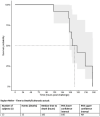


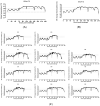
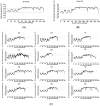

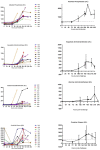

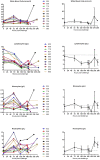




References
-
- Goldstein T., Anthony S.J., Gbakima A., Bird B.H., Bangura J., Tremeau-Bravard A., Belaganahalli M.N., Wells H.L., Dhanota J.K., Liang E., et al. The discovery of Bombali virus adds further support for bats as hosts of ebolaviruses. Nat. Microbiol. 2018;3:1084–1089. doi: 10.1038/s41564-018-0227-2. - DOI - PMC - PubMed
-
- Patel P.R., Shah S. StatPearls. StatPearls Publishing; Treasure Island, FL, USA: 2022. [(accessed on 2 May 2022)]. Ebola Virus. Available online: https://www.ncbi.nlm.nih.gov/books/NBK560579.
-
- Zawilińska B., Kosz-Vnenchak M. General introduction into the Ebola virus biology and disease. Folia Med. Cracov. 2014;54:57–65. - PubMed
Grants and funding
LinkOut - more resources
Full Text Sources
Miscellaneous

